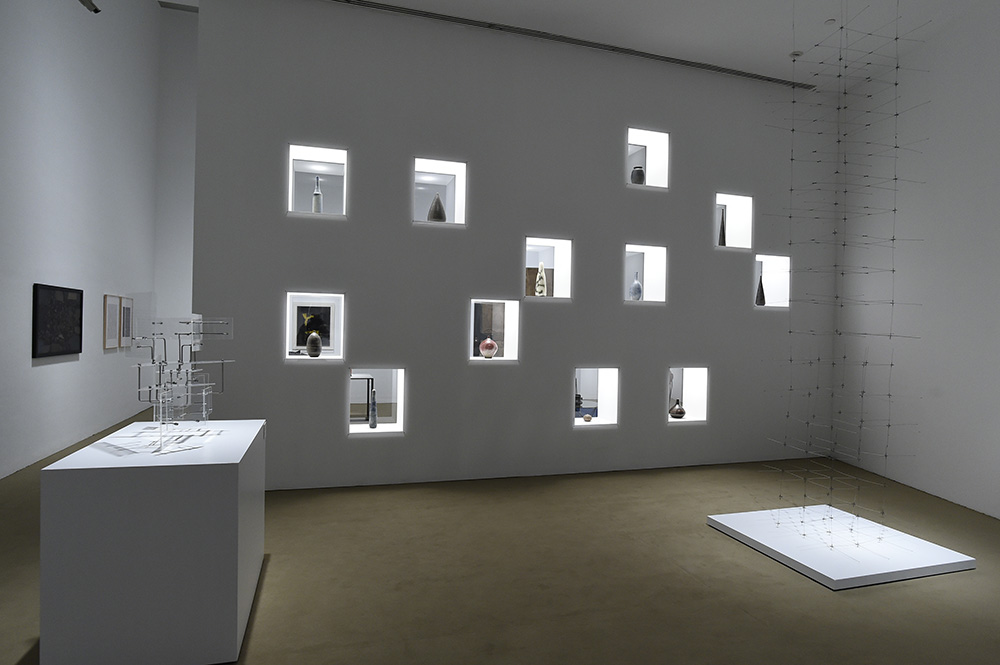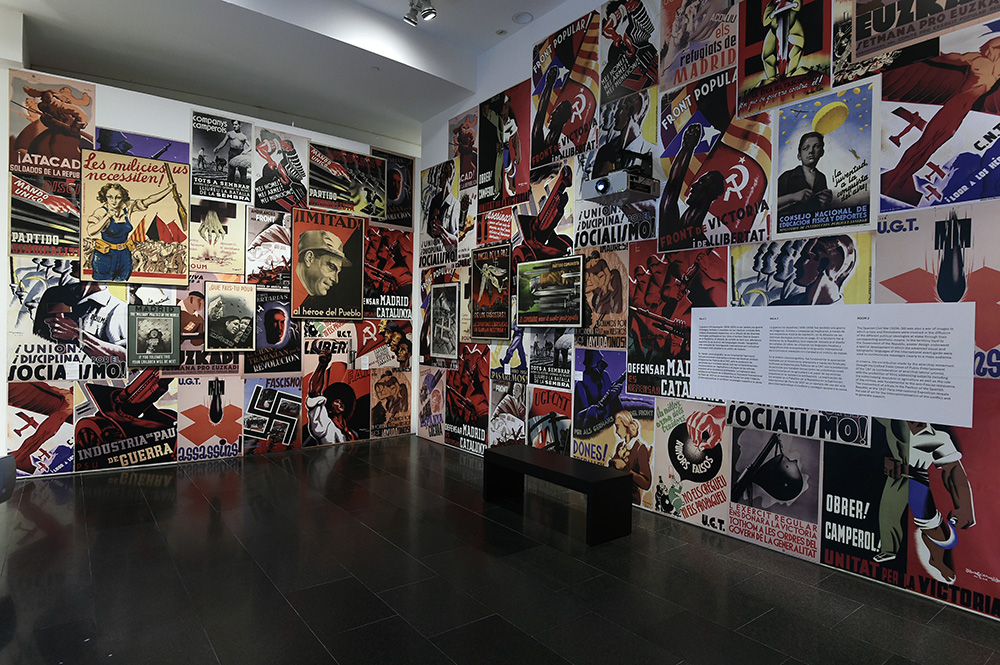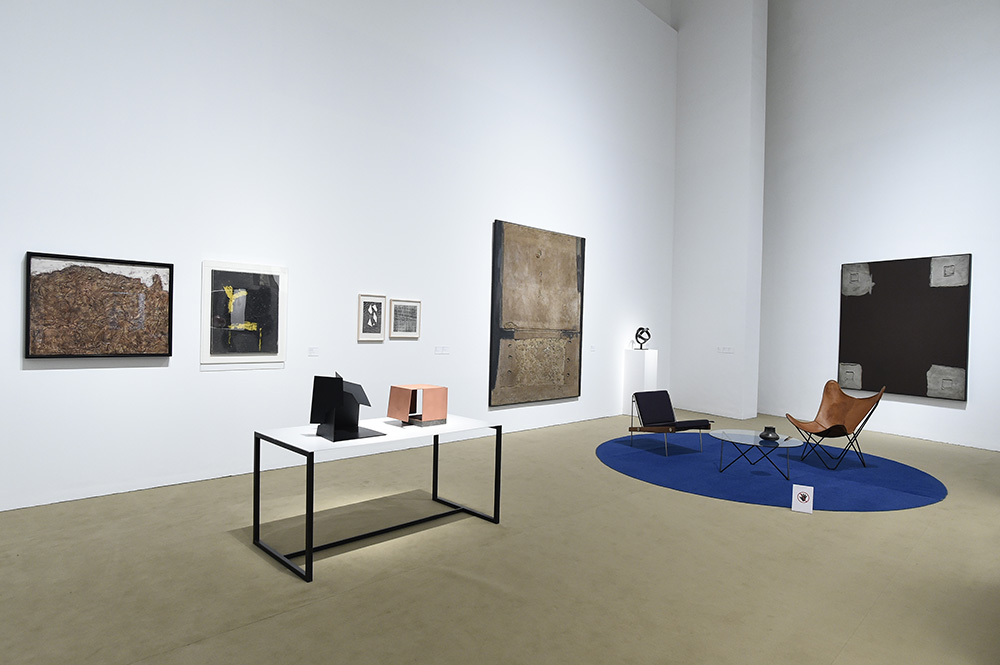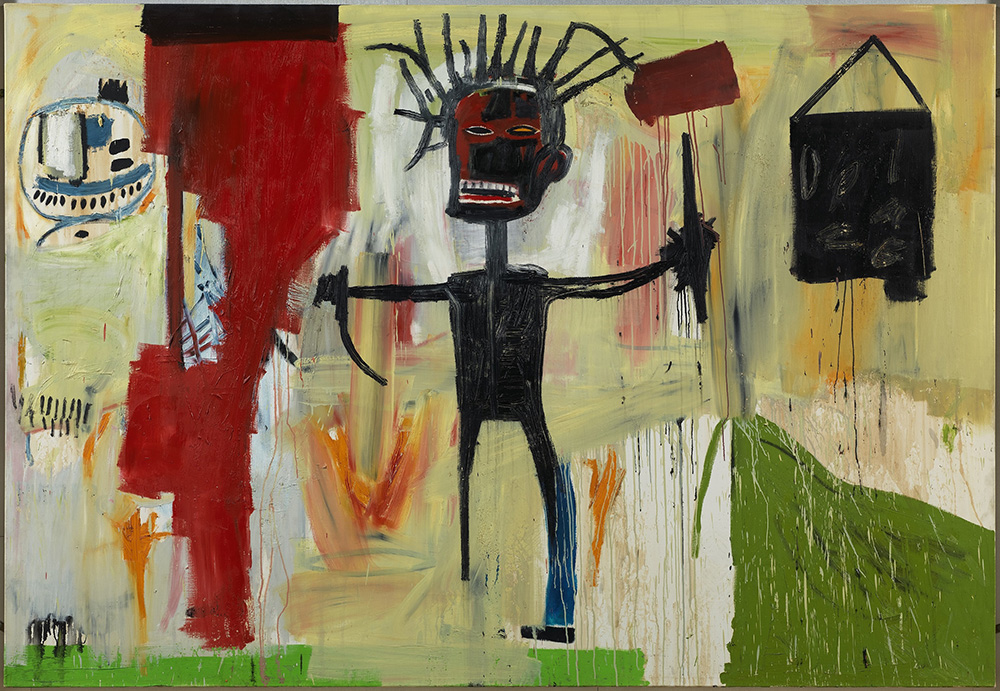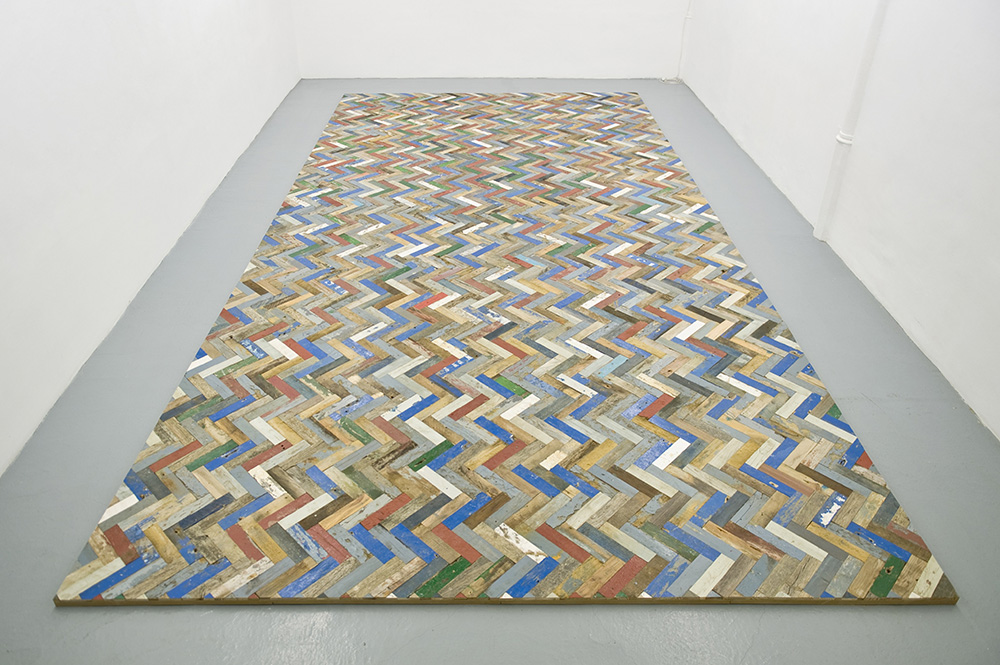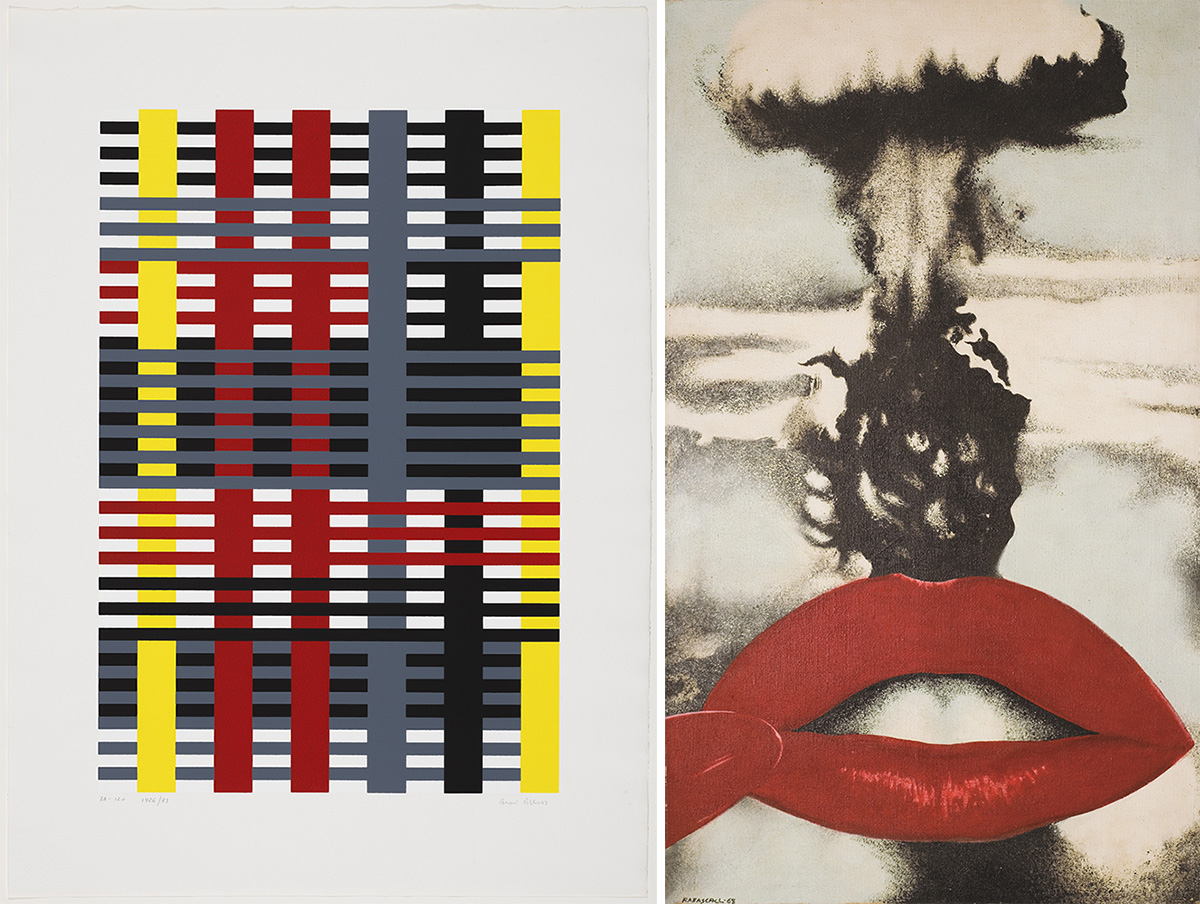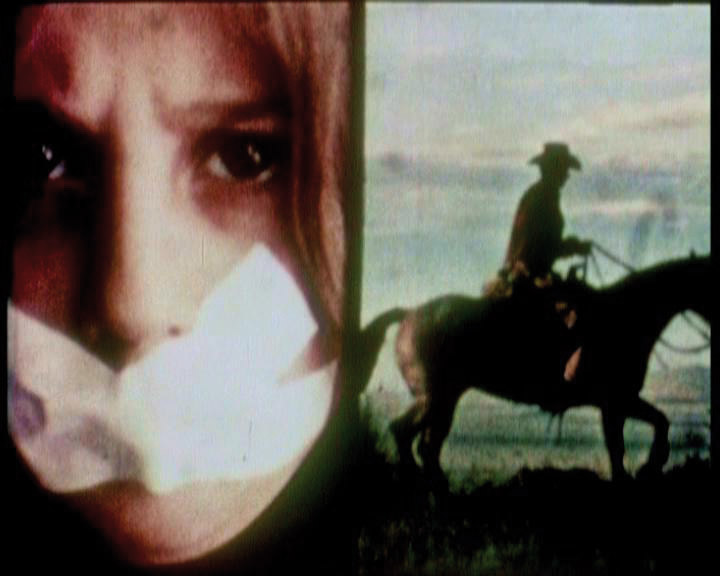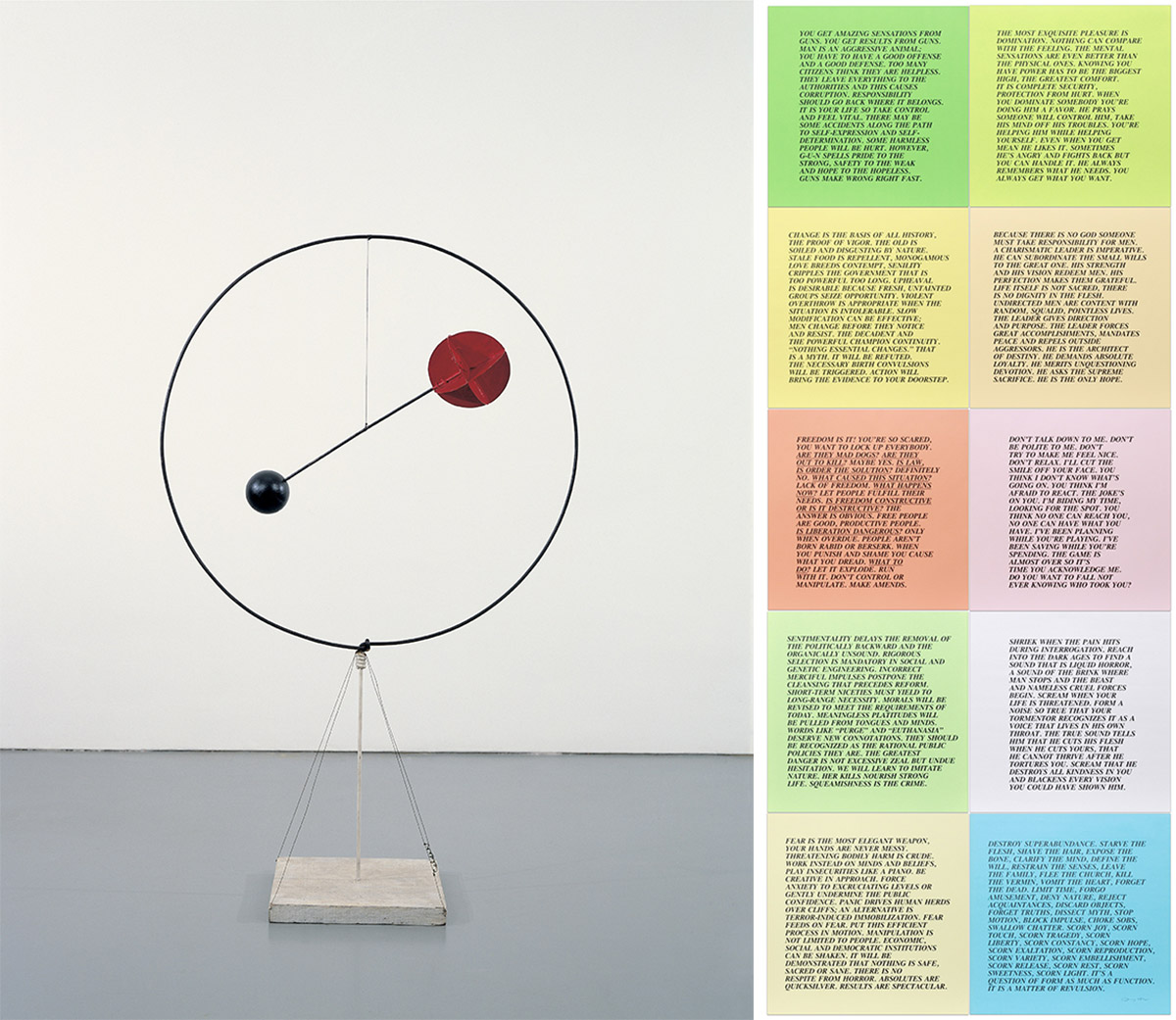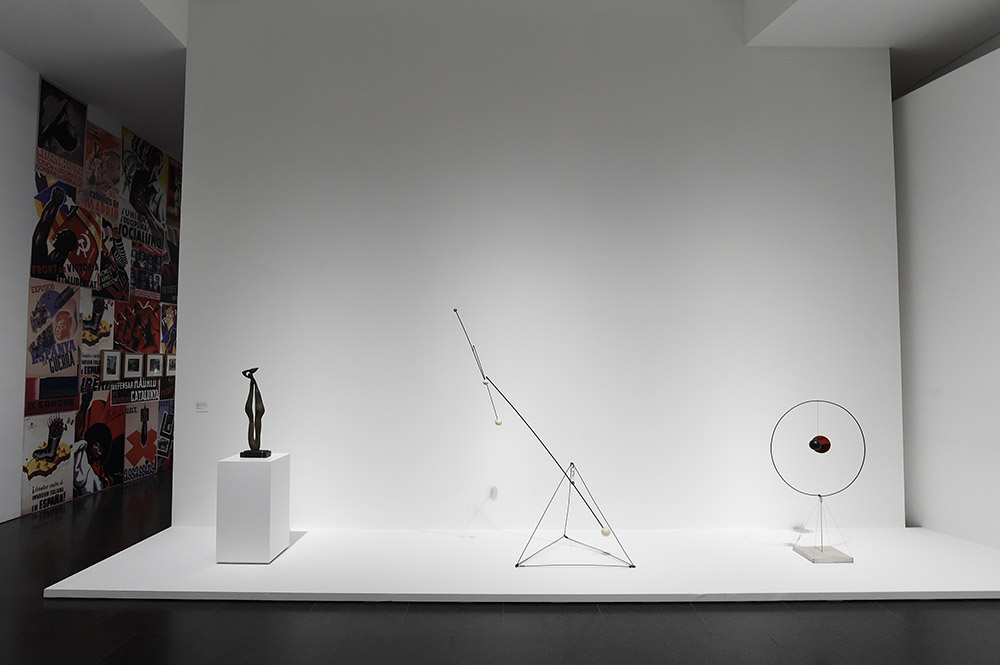ART-PRESENTATION:A Short Century-MACBA Collection
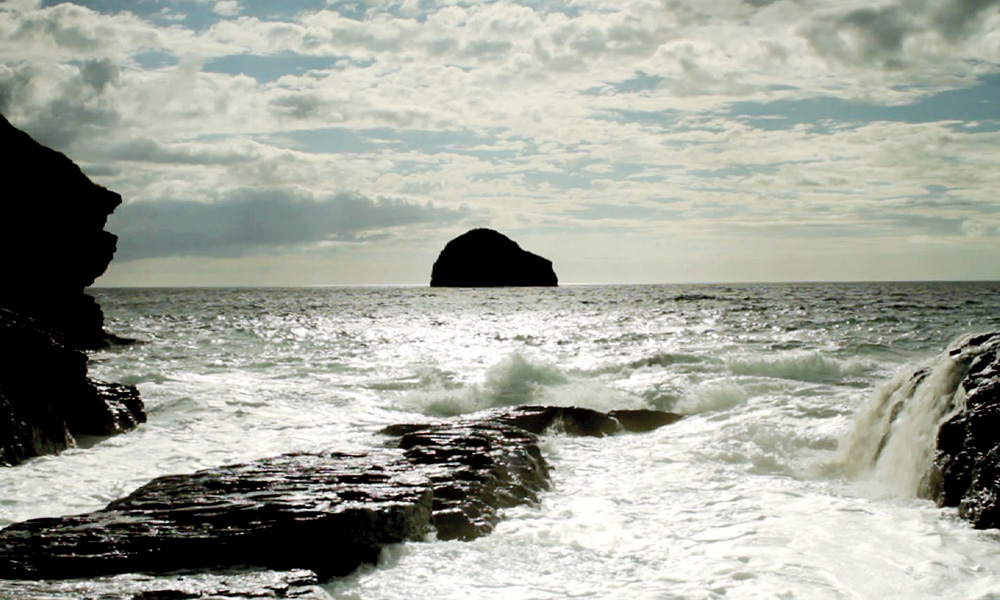 The title of the exhibition “A Short Century: MACBA Collection” proposes a word play with the expression coined by British Marxist historian Eric Hobsbawm in referring to the period between the First World War (1914) and the collapse of the Soviet Union (1991), conceived as the prolongation of “a long 19th Century” (another Hobsbawm term), the period from 1789 to the start of the war in 1914. With regards to the Museum Collection, a set of works from this “short century” of barely 90 years are presented, evidencing some of the fundamental tensions between various artistic manifestations and tendencies, and between them and other cultural expressions, with their respective social and political contexts.
The title of the exhibition “A Short Century: MACBA Collection” proposes a word play with the expression coined by British Marxist historian Eric Hobsbawm in referring to the period between the First World War (1914) and the collapse of the Soviet Union (1991), conceived as the prolongation of “a long 19th Century” (another Hobsbawm term), the period from 1789 to the start of the war in 1914. With regards to the Museum Collection, a set of works from this “short century” of barely 90 years are presented, evidencing some of the fundamental tensions between various artistic manifestations and tendencies, and between them and other cultural expressions, with their respective social and political contexts.
By Efi Michalarou
Photo: MACBA Archive
This display if the exhibition “A Short Century: MACBA Collection” includes a number of key works from the Collection, in a series of 11 rooms dedicated to the most emblematic cultural and social moments of the twentieth and early twenty-first centuries. At the core of the exhibition is a room dedicated to the political context of 1968, on the occasion of its 50th anniversary, and 1975, the year of Franco’s death. Room 1: The first decades of the 20th Century saw a rupture with established art forms and a profound transformation in the field of aesthetic reflection. The idea of there being an artistic Avant-Garde, which adhered to values like the new and the original, led to a radical experimentation with materials and forms. Among the main trends of this vanguard were those that sought to construct artistic languages of the universal and utopian from an analytical approach to form. Room 2: The Spanish Civil War (1936–39) was also a war of images in which artists and filmmakers were involved in the diffusion of the different political ideologies at stake through their corresponding aesthetic means. In the territory loyal to the Government of the Republic, poster design underwent a special development in which the advanced visual and typographic languages of the international avant-garde were used to communicate messages clearly to a mass audience. In cinema, the contribution made by the anarchist movement through the Unified Trade Union of Public Entertainment of the CNT with the production of films addressing subjects including the collectivising revolution in agriculture as well as the role of the militias, was fundamental to the anti-Fascist resistance. The involvement of artists in the Pavilion of the Spanish Republic at the 1937 Paris International Exposition reveals the use of art for the internationalisation of the conflict and to generate support. Rooms 3 & 4: In the years after the Civil War and following the end of the Second World War, artists explored divergent forms of abstraction. While this has been articulated as a tension between abstract geometric and concrete art on the one hand, and an abstraction that explored matter and an informel aesthetic on the other, these two principal tendencies also had degrees of proximity. Even though later forms of concrete art continued in the tradition of earlier utopian abstraction advanced by an international avant-garde, nevertheless elements of organicism, biomorphism and gesture began to be used. Similarly instances of geometric form can be detected in the more material abstraction. While associated with a resurgent bourgeoisie, as well as a counter to it, both tendencies were a means to deal with the creation of art in the aftermath of so much war and violence. They can be seen not necessarily as a way to avoid the consequences of conflict, but instead as techniques to examine, even if indirectly, the nature of humanity. Room5: During the sixties, art became imbued with images from advertising and the media. Artists experimented with these new visual languages, often using them to address urgent political issues of the time, and as effective ways through which to claim freedom of speech. The May 1968 revolts in various parts of the world, the process of decolonisation, as well as the Civil Rights, feminist and anti-war movements coincided and contributed to an era of turbulent change and counter-cultural struggle, transforming society and confronting its contradictions. In the case of the Spanish state, the social and political reality was defined by the Franco dictatorship (1939–75) and a conservative society strongly determined by Catholicism. This ‘grey’ context (named after the colour of police uniforms as well as the feeling of living under a dictatorship) provoked artistic practices from denunciation to irony – a tool for avoiding censorship. Through their work artists configured a critical iconography, sometimes referring to the aesthetics of comics, which coexisted with the alternative spaces of psychedelia. Room 6: At the end of the sixties, artists developed new ways to address the subject of the city. They used it to elaborate a discourse that revealed the conflictive nature of urban planning and the impoverishment of public space afforded to its inhabitants. Beginning in the seventies, New York was a paradigmatic example of urban and architectural morphology, demonstrating how changes in the fabric of the city altered its social distribution. Following in the wake of the degradation of urban areas was large-scale property investment and the associated processes of gentrification. Thus abandoned buildings, real estate speculation, the impossibility of public space and the existence of the homeless became the raw circumstances, materials and subject matter of socially-engaged artistic critique. The works undermined the official discourse of the new urbanism and its conception of the city, supposedly aseptic and without conflict. Room 7 & 8: The late sixties and seventies witnessed the emergence of a new era of radical feminism and feminist activism, within a broader counter-cultural or anti-establishment context, which took different forms around the world. This feminist struggle was at the basis of the work of a number of women artists, or even within a given social context. Many used the objectification of women in traditional forms of art and in the mass media, the creation of highly commercialised female stereotypes that emerged from advertising and publicity, as a means to denounce the subordinate role of women in society. Similarly, the body (through sexuality, motherhood and physical attractiveness), space (such as the domestic sphere), language, objects or attributes and colours associated with femininity or gendered as feminine were employed in ways that, with deliberate irony, embraced their formerly pejorative connotations in order to deconstruct and undermine such associations. Some artists widened their critique to counter a broader gender stereotyping. Room 9: Art and activism gained a new proximity in the eighties, and artists created work with strong ties to the domain of the street or elsewhere beyond the studio, bearing a relation to forms such as graffiti, comics or unauthorised fly-posters. Developing with the ongoing emergence of feminism, anti-racism, gay rights and identity politics were forms of art and activism that addressed specific issues such as the AIDS crisis. A burgeoning context of neoliberalism, free market economic policies and neo-colonial interventions were also targets for activist art. Popular culture and the cult of celebrity also exerted a continuing fascination for artists, who were impacted by the creation of new forms such as the music video and MTV, as well as fanzines produced as informal means of expression for subcultures, which provided a means to bypass establishment culture. Art, as well as fashion and graphic design, became dominated by intense new synthetic, heightened and fluorescent colours. Room 10: While identity politics continued to influence artists into the nineties, and they were still negotiating the legacies of Minimal art and its tendency to eschew the personal, they began to work with large-scale installation art and scenography in ways that, even while often referencing Minimal art, addressed intensely personal or political subject matter. Allusions to the body were frequently made through its absence, or through props, prosthetics or proxies in the form of aids for and augmentations of the body, or else via furniture or other objects that stood in for the body or body parts. Underlying these practices was a new consciousness of history at the fin de siècle and the end of the millennium. It was marked particularly by an awareness of the violence dominating twentieth-century history, a reflection made more intense in the aftermath of the fall of the Berlin Wall in 1989 and thus in an era of post-Communism, and likewise, at a time marked by debates around post-colonialism. Room 11: Recent art has focused on the critique of economic relations governed by neoliberalism, globalisation and simultaneously has examined the human relations that are dominated by geo-politics and unequal distributions of power. In our transnational economy the open sea is an economic space for the mobility of material goods, but it is also a contested space fraught with social and political debate. While commodities travel aboard container ships with ease, the mobility of people is curtailed despite circumstances of persecution and violence. A stark linguistic and conceptual contrast is drawn between those who are designated economic migrants or refugees. Artists have variously focused on the maritime economy through the transport of natural gas; the precariousness of the sea through the material remains of the migration crisis, reshaped into a parquet floor; or the interplay of capitalism, labour and politics through captions from news photographs that attest resistance movements worldwide against unjust economic policies, abuse of power and political repression.
Info: Curators: MACBA Team, Museu d’Art Contemporani de Barcelona (MACBA), Plaça dels Àngels 1 , Barcelona, Duration: 5/10/18- , Days & Hours: Mon & Wed-Fri 11:00-19:30, Sat 10:00-20:00, Sun 10:00-15:00, www.macba.cat
